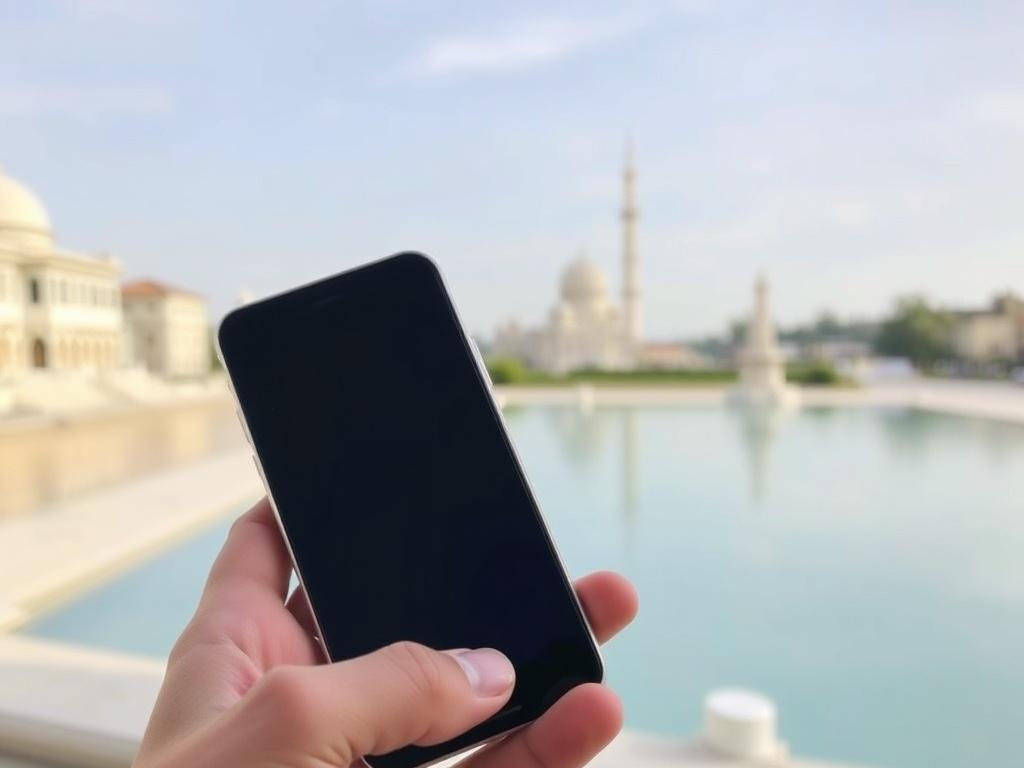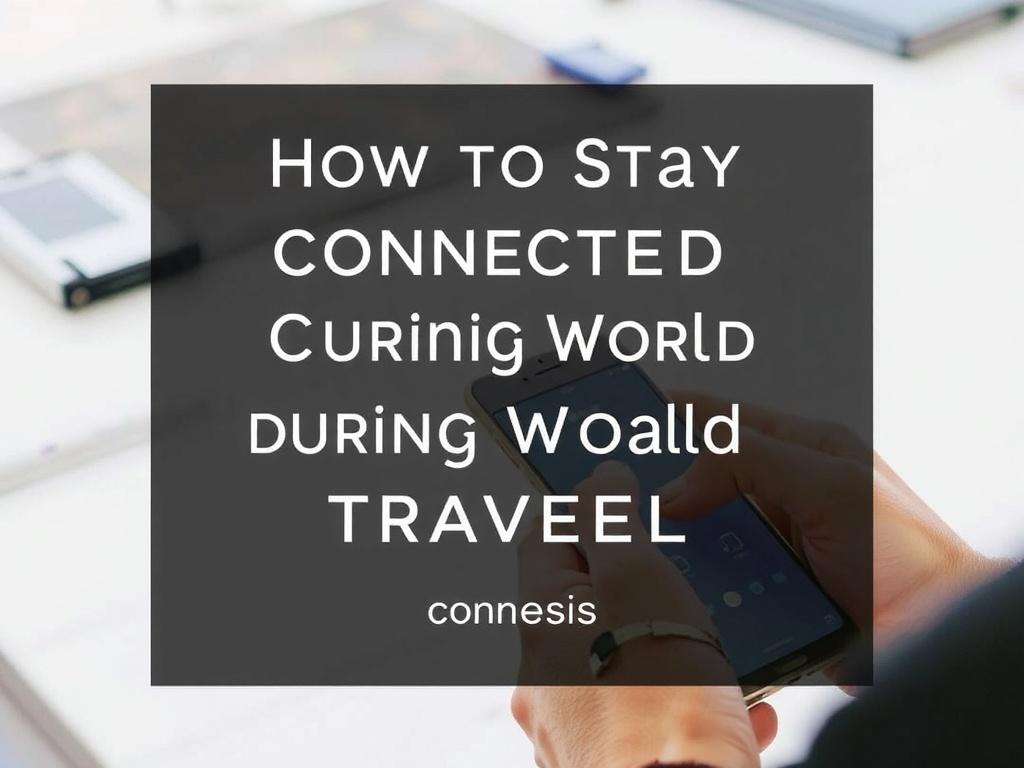Traveling across the globe is an exhilarating experience, but one concern many adventurers share is staying connected while on the move. Whether it’s keeping in touch with family and friends, managing work remotely, or simply staying informed, maintaining a stable connection during world travel is essential in today’s digital age. The good news is, with the right strategies and knowledge, you can navigate through different countries and time zones without losing touch. This comprehensive guide will walk you through everything you need to know about how to stay connected during world travel, making your journeys smoother and more enjoyable.
Understanding the Challenges of Staying Connected Abroad
When you think about traveling internationally, connectivity might not be the first thing on your mind. However, one of the most common issues travelers face is how to access reliable and affordable internet services. Different countries have varying levels of infrastructure, coverage, and regulations. Some may offer free Wi-Fi in public spaces, while others might have strict network restrictions or expensive roaming charges.
Additionally, time differences can make communication tricky. Coordinating calls or video chats with loved ones back home often requires a bit of planning. Another challenge is the inconsistency in charging devices—different outlets and voltages require suitable adapters and converters. It’s also worth noting that security on public Wi-Fi networks can be a concern, putting personal information at risk.
Before you embark on your journey, it’s helpful to understand the obstacles so you can prepare adequately to stay connected during world travel.
Planning Ahead for Connectivity: Key Tips Before You Leave
Preparation is a traveler’s best friend, especially when it comes to connectivity. Here are some essential steps you can take before leaving your home country to ensure you stay connected throughout your trip.
- Research Network Providers and Plans: Look into the mobile networks in the countries you plan to visit. Some countries have better infrastructure for tourists, offering short-term SIM card options or eSIM services tailored for travelers.
- Unlock Your Phone: If your phone is locked to a carrier, get it unlocked before you leave. This opens up the possibility of using local SIM cards, often more cost-effective than roaming.
- Download Essential Apps: Messaging apps (like WhatsApp, Skype, or Telegram), offline maps, VPNs, and travel guides are a must-have to stay connected and navigate offline if necessary.
- Backup Important Information: Save copies of your itinerary, emergency contacts, and other vital documents both physically and digitally. Cloud storage can be lifesaving, but make sure you set up secure access.
- Pack Smart Charging Gear: Bring universal adapters, portable power banks, and charging cables to keep your devices powered up no matter where you go.
By laying this groundwork, you’ll reduce stress later and maximize your ability to communicate wherever you travel.
Mobile Connectivity Options Around the World
One of the most important ways to stay connected during world travel is securing reliable mobile service. There are several options, each with pros and cons.
Local SIM Cards
Buying a local SIM card upon arrival is often the cheapest way to get data and call services. Local SIM cards usually come with prepaid plans that offer a variety of data packages, perfect for travelers who want to avoid roaming fees. The downside is that changing SIM cards means changing phone numbers temporarily, which can make it harder for new contacts to reach you.
International SIM Cards
International SIM cards work in multiple countries and can be ordered before you leave. They offer convenience but often at higher prices and sometimes with limited data speeds. These can be great for shorter trips spanning many countries.
eSIM Technology
If your phone supports eSIMs, this option lets you download a data profile digitally without swapping physical cards. It’s perfect for frequent travelers who want flexibility to switch between providers quickly. Keep in mind that eSIM support is still not universal in every country.
Roaming Plans from Your Home Provider
Many mobile carriers offer international roaming packages that allow you to use your existing number abroad. This is convenient but usually comes at a premium price, especially for data usage.
Wi-Fi-Only Connections
Using Wi-Fi exclusively can eliminate the need for cellular service, especially in urban areas with widespread internet cafes, hotels, and public hotspots. However, Wi-Fi can be unreliable, slow, or even insecure at times.
| Option | Pros | Cons | Best For |
|---|---|---|---|
| Local SIM Cards | Affordable, good coverage | Requires phone unlocking, local number | Long stays in one country |
| International SIM Cards | Works in multiple countries, no swapping SIMs | Higher cost, limited speeds | Multi-country trips |
| eSIMs | No physical SIM needed, flexible switching | Not all phones or countries supported | Tech-savvy frequent travelers |
| Roaming with Home Provider | Keep your number, convenience | Expensive rates | Short trips or urgent use |
| Wi-Fi Only | Often free | Unreliable, security concerns | Urban travel, low data needs |
Tools and Apps to Maintain Connection Across Continents

Technology today offers a wealth of tools to keep your digital life seamless even when you’re thousands of miles away from home. Here are some recommended apps and tools to help you stay connected during world travel.
- Messaging and Video Calling: WhatsApp, Skype, Signal, and Zoom are great for free calling and texting over Wi-Fi or mobile data, enabling you to stay close to family, friends, and colleagues.
- VPN Services: Using a Virtual Private Network (VPN) protects your data when logging onto public Wi-Fi networks and helps bypass geo-blocked content. Popular choices include NordVPN and ExpressVPN.
- Offline Maps and Translators: Google Maps allows offline downloads, so you don’t need the internet to navigate. Translation apps like Google Translate can assist you in communicating with locals without a constant connection.
- Cloud Storage: Google Drive, Dropbox, and OneDrive provide safe, secure access to your files from any device, preventing data loss and making sharing a breeze.
- Currency and Travel Apps: Apps like XE Currency and TripIt help you manage finances and itineraries on the go.
By curating your app collection before you travel, you’ll have a virtual toolbox to support both connectivity and convenience.
Best Practices for Using Public Wi-Fi Safely
Public Wi-Fi spots in airports, cafes, hotels, and libraries are lifesavers for travelers trying to save on data. However, they come with significant security risks if not handled carefully. Here are some important tips to keep your connection secure in public spaces:
- Use a VPN: A VPN encrypts your internet traffic, making it difficult for hackers to intercept your data.
- Avoid Sensitive Transactions: Do not log into banking or sensitive accounts over unsecured Wi-Fi.
- Verify Network Names: Double-check the Wi-Fi network name with staff to avoid fake “honeypot” networks that steal information.
- Keep Software Updated: Make sure your device’s software, antivirus, and apps are current to defend against vulnerabilities.
- Disable Automatic Connections: Turn off automatic Wi-Fi connections to prevent your device from joining unknown networks by itself.
Staying vigilant while using public Wi-Fi helps you avoid common cyber threats and keeps your personal data safe during your travels.
Staying Connected When Traveling to Remote Destinations
What if you’re heading off the beaten path, to rural villages, mountains, or deserts where cellular networks are spotty or nonexistent? Staying connected during world travel in remote locations requires a different approach.
Satellite internet devices can provide connectivity in almost any location on earth. Devices like Iridium GO! and Globalstar offer satellite-based communication but often at high cost and slower speeds.
Alternatively, some travelers rely on offline communication tools such as pre-downloaded maps, written notes, or local guides. In some remote areas, local SIM cards or community networks may also offer partial coverage.
When planning trips to these far-flung places, map out communication points ahead of time and consider renting or buying specialized equipment to stay safe and reachable.
Managing Connectivity Around Different Time Zones
One subtle challenge of world travel is juggling communication across time zones. You might be wide awake while family members back home are asleep, or vice versa. Here are ways to manage:
- Use Time Zone Apps: Apps like World Clock and Time Buddy help coordinate calls and meetings efficiently.
- Send Messages Instead of Calling: Asynchronous communication via texts or emails allows people to respond when convenient.
- Schedule Regular Check-Ins: Finding a mutually agreeable time to connect weekly or biweekly supports connection without hassle.
- Adjust Your Routine: If you’re working remotely, try to align some working hours with partners or clients in different time zones.
Being mindful of time zones keeps your relationships strong and eliminates frustration on both sides.
How to Handle Phone and Data Usage Costs Abroad
One of the biggest surprises travelers face is the high cost of mobile data and calls abroad. Here are some tips for managing expenses while staying connected during world travel:
- Set Data Usage Limits: Many smartphones let you monitor and limit data use to avoid surprise charges.
- Use Wi-Fi Whenever Possible: Prioritize using Wi-Fi for data-heavy activities like video calls and downloads.
- Buy Local or International SIMs with Unlimited Data: Consider plans with flat fees to avoid per-megabyte charges.
- Turn Off Background Data: Disable apps from refreshing or downloading updates in the background.
- Avoid Streaming Media: Streaming music and video consume large amounts of data and can quickly rack up costs.
Keeping a close eye on your usage habits and costs will help you maintain financial control while enjoying connectivity abroad.
Essential Accessories to Stay Connected During Travel
Packing smartly can make a significant difference in staying connected during world travel. Having the right accessories keeps your devices charged, protected, and ready to go. Some must-haves include:
- Universal Travel Adapter: Compatible with sockets worldwide, avoiding the frustration of dead devices.
- Portable Power Bank: Allows you to charge your phone on the go, especially during long days of sightseeing or transit.
- Extra Charging Cables: Carry backups in case of loss or damage.
- Phone Cases with Storage: Combine device protection with slots for SIM cards or credit cards.
- Compact Travel Router: Extends and secures Wi-Fi signals in hotels or cafes, improving connection quality.
Investing in dependable gear can save headaches when you really need to get online.
Maintaining Mental Wellness Through Staying Connected
Staying connected isn’t just about technology; it also plays a crucial role in your mental health while abroad. Feeling isolated or disconnected can dampen even the most exciting adventures. Regular communication with loved ones provides emotional support and reduces stress.
On the flip side, it’s important to find a balance. Overdependence on digital communication can detract from experiencing the authentic moments of travel. Schedule times to check in, but also set aside offline moments to absorb your surroundings fully.
By managing digital connection and personal presence effectively, your travel experience becomes richer and more fulfilling.
Summary Table: How to Stay Connected During World Travel
| Aspect | Tips & Tools | Benefits |
|---|---|---|
| Pre-Travel Planning | Unlock phone, download apps, backup data | Saves time, prevents connectivity issues |
| Mobile Connectivity | Local SIM, eSIM, roaming, international SIM | Affordable, flexible communication options |
| Apps | Messaging, VPN, offline maps, cloud storage | Improves communication and security |
| Wi-Fi Safety | Use VPN, verify networks, avoid sensitive info | Protects personal data from cyber threats |
| Time Zones | Time apps, asynchronous messaging | Enhances communication efficiency |
| Cost Management | Set data limits, use Wi-Fi, local plans | Avoids expensive roaming charges |
| Essential Gear | Adapters, power banks, travel routers | Ensures devices stay powered and connected |
Conclusion

Staying connected during world travel may seem challenging, but with the right knowledge and tools, it can become an effortless part of your adventure. From planning ahead by researching mobile providers and unlocking your phone to using local SIM cards or the latest eSIM technology, multiple options exist to keep you online and reachable. Leveraging essential apps, practicing safe use of public Wi-Fi, and managing communication across time zones will optimize your connectivity experience. Don’t forget to pack the right accessories and balance your digital interactions with offline exploration for a truly rewarding journey. By following these strategies, staying connected throughout your travels will not only keep you informed and secure but also enhance your travel experience by keeping your loved ones close and the world at your fingertips. Safe travels and happy connecting!









